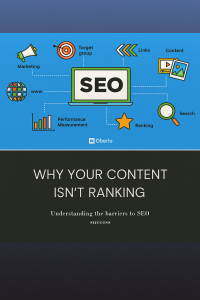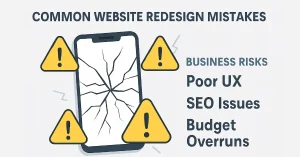Find what on-page SEO is, the explanation it has any effect, and 10 of the most critical on-page SEO thoughts you need to focus on to succeed.
Prevailing in the natural hunt today requires streamlining for a mix of significant elements that web crawlers consider – specialized, on-page, and off-page.
We’ve seen expanded concentration toward off-page strategies—for example, third-party referencing—and other specialized components throughout the long term.
Be that as it may, off-page SEO won’t do a lot of good if you don’t focus on the basics – on-page SEO.
Shrewd SEO specialists realize that on-page improvement should be continually organized.
Additionally, as the request scene is steadily propelling, it’s fundamental to guarantee that your on-page SEO data is best in class.
This post will cover on-page SEO, why it matters, and 10 of the most significant on-page SEO contemplations today.

What Is On-Page SEO?
On-page SEO (otherwise called nearby SEO) alludes to enhancing site pages to improve a site’s web crawler rankings and drive natural traffic to your website.
Despite circulating significant, extraordinary material, on-page SEO consolidates improving your highlights, HTML names (title, meta, and header), and pictures. It moreover infers that your site has a higher degree of fitness, authenticity, and trustworthiness.
Why Is On-Page SEO Important?
On-page SEO is significant because it helps web indexes comprehend your site and its material and recognize whether it applies to a searcher’s inquiry.
As web crawlers become more advanced, there is a more prominent concentration toward pertinence and semantics in web index results pages (SERPs).
Google, with its lot of complex counts, is by and by much better at:
- Understanding what clients are searching for when they type a request.
- It was assigning indexed lists that gather client aims (shopping, instructive, maritime).
Adjusting to this improvement is essential, and you can do it by guaranteeing that your site and its material– both what is evident to clients on your site pages (i.e., text, pictures, video, or sound) and segments that are simply observable to web crawlers (i.e., HTML marks, coordinated data) – are generally cutting-edge by the latest acknowledged methodology.
Moreover, you can’t simply dismiss on-page SEO because you have more control while redesigning for on-the-spot segments—instead of off-page SEO that includes open-air signs.
If you put exertion into on-page systems, you’ll see a lift in rush hour gridlock and an ascent in your pursuit presence.
This guide will walk you through the main components of on-page SEO.
Giving close thought to these ten locales will help improve your material and authority – and increase your rankings, traffic, and changes.
1. E-A-T
E-A-T stands for Expertise, Authoritativeness, and Trustworthiness ¹. It is a set of criteria used by Google’s Search Quality Rater Guidelines to assess the quality and credibility of web content. Google recently added “E” to the mix, which stands for Experience, to form E-E-A-T ¹. Here are some key points about E-A-T ¹ ²:
- Expertise: Demonstrate your subject matter expertise through the depth and accuracy of your content and author credentials.
- Authoritativeness: Build your brand’s authority by consistently publishing high-quality content, earning coverage and mentions from other respected sites, and growing your reputation within your industry.
- Trustworthiness: Be transparent about who is behind your content, provide clear contact and customer service information, maintain a positive reputation, and follow ethical content practices.
In October 2023,, E.A.T has been updated to E.E.A.T
E.E.A.T
E-E-A-T stands for Experience, Expertise, Authoritativeness, and Trustworthiness ¹. It’s an evolution of the original E-A-T concept, which Google introduced to evaluate web content’s overall quality and credibility ² ¹. Here’s a brief overview of each aspect of E-E-A-T ² ¹:
- Experience: Show that your content is created by people with direct, first-hand experience with the topic. This could be through author bios, “behind the scenes” content, or by directly referencing personal experiences within the content itself.
- Expertise: Demonstrate your subject matter expertise through the depth and accuracy of your content and author credentials and by citing reputable sources and studies.
- Authoritativeness: Build your brand’s authority by consistently publishing high-quality content, earning coverage and mentions from other respected sites, and growing your reputation within your industry.
- Trustworthiness: Be transparent about who is behind your content, provide clear contact and customer service information, maintain a positive reputation, and follow ethical content practices.
2. Title Tag
The title tag, an HTML label in every website page’s head segment, gives an underlying sign or setting regarding the particular carrier’s important topic.
It is included noticeably in the internet searcher results pages (commonly utilized optimization as the interactive connection), just as in the program window.
The title tag, without any other person, has little impact on common rankings, which is why it’s sometimes dismissed.
Missing, copy, and inadequately composed title labels can all adversely affect your SEO results, ensuring you’re enhancing this component.
3. Meta Description
Since the beginning of SEO, meta depictions have been a significant advancement point.
Meta portrayals, meta marks that depict the issue here, often appear in the SERPs under the page’s title.
While Google maintains that meta portrayals don’t assist with rankings, there is confirmation that the winding qualities of better depictions do help.
Enhancing meta-depiction can help improve:
- Active clicking factor (CTR)
- The impression of the nature of the outcome
- The impression of what your site offers all change
4. Headlines
Need your site material to perform well on the hunt? At that point, begin composing convincing features.
Thinking about a title for a blog section may give off an impression of being excessively basic. However, a mind-blowing highlight can mean the differentiation between a tick and an impression – that is the explanation it’s basic to make purposely.
Your features need to spark interest for it to stand apart on the SERPs, luring clients to navigate and continue perusing the material’s remainder.
5. Header Tags
Header labels are HTML components (H1-H6) used to differentiate headings and subheadings inside your material from different text types (e.g., passage text).
Header marks aren’t as critical for your site rankings as they used to be; nonetheless, these names serve a huge limit – for your customers and your SEO.
They can, by implication, sway your rankings by:
- You are making your material clearer and more agreeable for guests to peruse.
- You are giving catchphrase-rich settings about your material for the web crawlers.
6. SEO Writing
Website optimization composing implies composing content with both web indexes and clients in mind.
Composing strong SEO content involves a process other than catchphrase exploration and filling in the spaces. Delivering content for it will not do. Remember that you’re composing content for individuals—along these lines, that material must be high-caliber, considerable, and significant.
7. Keyword Cannibalization
Valid or bogus? The more pages you have focusing on a watchword, the better you’ll rank for that catchphrase.
Bogus!
Focusing on a particular term over different pages can cause “catchphrase cannibalization,” which can have potentially unlucky ramifications for your SEO.
At the point when you have various pages positioning for a similar watchword, you’re rivaling yourself.
It’s imperative to recognize whether catchphrase cannibalization exists on your site and resolve it immediately.
8. Content Audit
Most content creators are based on making new material that they disregard to survey. Moreover, this is a blunder.
- Investigating your present material is huge because it causes you:
- Evaluate whether your present material is achieving its targets and getting ROI.
- Perceive whether your material’s information is so far accurate or has gotten dead (or even out of date).
- Sort out what kinds of materials are working for you.
Content surveys can unbelievably help your SEO technique and should be done reliably.
9. Picture Optimization
Adding pictures is a fair strategy to make your site pages more captivating. However, not all pictures are created equal—some can even slow down your site.
- Improving pictures will help you gain a huge SEO asset.
- Picture smoothing out has various inclinations; for instance,
- Additional situating possibilities (show up on Google Image Search)
- Better customer experience.
- Speedier page load times.
Pictures shouldn’t be a reevaluation. Attempt to solidify pictures that help your material and use realistic titles and alt text.
10. Client Engagement
Redesigning your site’s on-page SEO parts is only a huge segment of the battle.
The other half lies in making sure that customers won’t weave – in any case, taking everything into account, they’ll continue seeing your material, interfacing with it, and hold returning for extra.
Holding attracted customers is an unbelievable test in itself; notwithstanding, it’s decidedly conceivable. Extending customer responsibility revolves around perspectives such as site speed, customer experience, and material improvement.
Get Our Complete Guide to On-Page SEO
We’ve scarcely begun to uncover what’s under. All set significantly further?
Web crawler Journal’s advanced book, The Complete Guide to On-Page SEO, handles the top on-page SEO factors that influence your pages’ detectable quality on the SERPs.
Digital marketing is necessary to digitize your business. In digital marketing, SEO is the most crucial to prevailing in online business.



